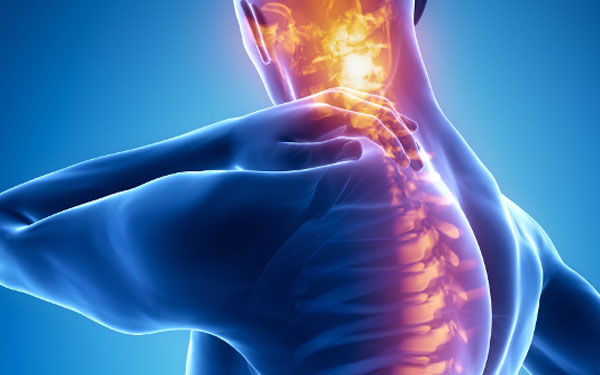- FREE Express Shipping On Orders $99+

Neuropathic Pain: New Insights and Treatment Options
Neuropathic pain, a condition caused by nerve damage or dysfunction, affects millions of individuals worldwide, leading to significant physical and emotional distress. Traditional treatments often fall short, necessitating ongoing research and the development of new therapies. This article delves into the latest insights and treatment options for neuropathic pain, offering a comprehensive look at how modern medicine is addressing this complex condition.
Understanding Neuropathic Pain
Neuropathic pain arises from abnormalities in the nervous system, rather than from direct physical injury. It is often described as burning, shooting, or stabbing pain, and can be accompanied by sensations like tingling or numbness. Common causes include diabetes, shingles, multiple sclerosis, and chemotherapy.
Advancements in Pharmacological Treatments
Targeted Drug Therapies
Recent advancements in pharmacology have led to the development of drugs that more precisely target the mechanisms of neuropathic pain. These include:
- Sodium Channel Blockers: Medications like lacosamide and carbamazepine inhibit the activity of sodium channels in nerve cells, reducing the transmission of pain signals.
- Calcium Channel Modulators: Gabapentin and pregabalin decrease calcium influx in neurons, thereby reducing neurotransmitter release and diminishing pain perception.
- SNRIs and TCAs: Duloxetine, venlafaxine, and amitriptyline increase levels of serotonin and norepinephrine, which are critical in modulating pain pathways.
Topical Analgesics
Topical treatments offer localized pain relief with fewer systemic effects. Innovations in this area include:
- Lidocaine Patches: These patches provide targeted numbing by blocking sodium channels in the skin.
- Capsaicin Creams: Derived from chili peppers, capsaicin depletes substance P, a neuropeptide involved in pain transmission.
Innovative Non-Pharmacological Therapies
Neuromodulation Techniques
Neuromodulation, which involves altering nerve activity through electrical stimulation, has shown significant promise. Key methods include:
- Spinal Cord Stimulation (SCS): SCS devices deliver electrical impulses to the spinal cord, interrupting pain signals before they reach the brain. Recent advancements include high-frequency and burst stimulation modes for improved outcomes.
- Peripheral Nerve Stimulation (PNS): PNS targets specific peripheral nerves with electrical impulses, providing relief for localized neuropathic pain conditions like complex regional pain syndrome (CRPS).
Transcranial Magnetic Stimulation (TMS)
TMS is a non-invasive technique that uses magnetic fields to stimulate neurons in the brain. Repetitive TMS (rTMS) has been shown to reduce pain by altering the central nervous system’s pain pathways, offering hope for patients who have not responded to other treatments.
Emerging Biological Therapies
Gene Therapy
Gene therapy aims to address neuropathic pain at its source by targeting specific genes involved in pain signaling. Early research suggests that modifying these genes can provide long-lasting pain relief, although this therapy is still in the experimental stages.
Stem Cell Therapy
Stem cell therapy involves the use of stem cells to repair damaged nerves and restore normal function. Clinical trials are underway to evaluate the efficacy of stem cell treatments for neuropathic pain, with early results indicating potential benefits.
Cannabinoids
Cannabinoids, such as CBD (cannabidiol) and THC (tetrahydrocannabinol), interact with the endocannabinoid system to modulate pain. Growing evidence supports their use in managing neuropathic pain, and ongoing research aims to better understand their mechanisms and optimize their therapeutic use.
Complementary and Integrative Approaches
Acupuncture
Acupuncture, a practice rooted in traditional Chinese medicine, has been validated by modern research for its effectiveness in pain relief. By stimulating specific points on the body, acupuncture can promote the release of endorphins and other pain-modulating substances.
Physical Therapy
Physical therapy is a cornerstone of neuropathic pain management. Techniques such as manual therapy, desensitization exercises, and graded motor imagery help reduce pain and improve functional ability. Tailored exercise programs can also enhance mobility and overall health.
Psychological Interventions
Addressing the psychological aspects of chronic pain is crucial. Techniques such as cognitive-behavioral therapy (CBT), mindfulness-based stress reduction (MBSR), and biofeedback can help patients manage their pain by altering pain perception and developing coping strategies.
Holistic and Integrative Pain Management
Personalized Medicine
Personalized medicine involves tailoring treatments to an individual’s unique genetic makeup, lifestyle, and specific pain profile. Advances in genetic research and biomarker identification are facilitating more customized and effective pain management strategies.
Multidisciplinary Pain Clinics
Multidisciplinary pain clinics bring together specialists from various fields to provide comprehensive care. This collaborative approach ensures that all aspects of a patient’s condition are addressed, from physical symptoms to emotional and psychological well-being.
Future Directions and Ongoing Research
The future of neuropathic pain management lies in the continued integration of advanced technologies and therapies. Ongoing research is focused on developing new drug targets, optimizing neuromodulation techniques, and exploring the full potential of biological therapies. Additionally, efforts are being made to better understand the genetic and molecular underpinnings of neuropathic pain, which will pave the way for more effective and personalized treatments.
Conclusion
Neuropathic pain remains a challenging condition, but recent advancements offer new hope for effective management. From innovative drug therapies and neuromodulation techniques to emerging biological treatments and integrative approaches, a wide array of options is now available to improve the quality of life for those affected. By staying informed about the latest insights and treatment options, patients and healthcare providers can work together to achieve optimal pain relief.
